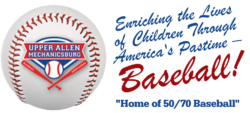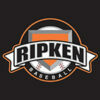Field Maintenance
Mistakes to avoid when caring for the baseball fields
The following is a list of suggestions in order to help you avoid the potential mistakes that one can make when maintaining a baseball or softball field. Avoiding these traps will not only keep the field in better condition, but will save you time and frustration of some of the most problematic pitfalls that overcome groundskeepers and field maintenance workers.
Avoid folding mound and plate tarps
- Doing so will cause creases that weaken the tarp material and reduces overall life of tarp
- Instead, roll the tarp on a tube or PVC pipe and hang for easy storage.
Never rake across baselines
- This tends to pull material to the edges of the baseline creating high places and lips on edges and gullies in the center that hold water.
- Instead, rake lengthwise from home toward first and third.
Avoid continued raking of wet infield mix
- Raking thoroughly mixes the water in the infield mix and loosens the consistency, turning the mix into a soupy muck.
- Instead, make a single pass to “groove” the infield to create ridges, increasing surface area to spread drying.
Never drag within 12” of turf areas
- This causes the drag to sweep into the grass, depositing infield mix in the turf and building lips over time.
- Instead, hand rake this 12” strip after you have dragged the rest of the infield.
When dragging, never start and stop in the same place that you did the previous day (eg: always starting at 1st and ending at 3rd)
- Repetitive dragging paths make the field uneven. Dragging equipment carries or moves infield mix, and at end of the season 1st base could end up a couple inches lower than 3rd base.
- Instead, vary start and stop locations as well as drag pattern.
Avoid tamping moist clay in batters boxes or on mound with a “naked” tamp – one with an exposed metal base
- If you have properly wet the clay before tamping, the clay will stick to the bare metal and accumulate on the tamp.
- Instead, use a tamp sock, towel, duck tape, or plastic bag to create a separation barrier between the clay and steel.
Never attempt to fill holes in batters boxes or mounds without water and tamp
- Dry material filled into the hole looks goods at first, but will kick out with the 1st batter or pitch, leaving a new hole in its place.
- Instead, sweep hole clean of loose material, moisten hole, add packing clay and tamp.
Never “broom” standing water puddles on infields
- This moves the water but leaves a hole in its place that will grow over time.
- Instead, remove excess water with cup, sponge or pump and use a drying agent such as Turface QuickDry™ to absorb the remaining water.
Never drag the infield without removing and plugging bases
- The infield mix fills in underneath the base and gradually raises the base, causing potential injuries for runners.
- Instead, rake or drag material from under the base and fill in the sliding pits. Roll or tamp pits.
Never use lime dust or chalk to line outfield grass
- Lime or chalk breaks down very slowly and will buildup with repeated use. This creates ridges down the lines and can cause dams to form and resulting puddles in the outfield turf.
- Instead, use paint for lines in turf. Also regularly remove chalk used to line infield clay to avoid buildup. Consider painting lines on skinned area. Note: surface must be moist for the paint to stick to the clay.
Never leave the field “loose” from scarifying or tilling if heavy rains are expected and the field is to be used soon
- Rain will penetrate and accumulate in the infield mix.
- Instead, firm or roll the infield tight so excess rain will shed and follow natural drainage.
Never aerate during hot conditions unless irrigation is available
- A field can lose the equivalent of 1 ½″ of rain if aerated on a hot breezy day
- Instead, aerate when temperatures are cool, or when rain is expected. Or be prepared to irrigate.
Never put off until tomorrow what can be done today
- Everything takes longer than expected
- Instead, prepare for the worst and be pleasantly surprised.
More information on field maintenance can be found by clicking on the following website link below:







